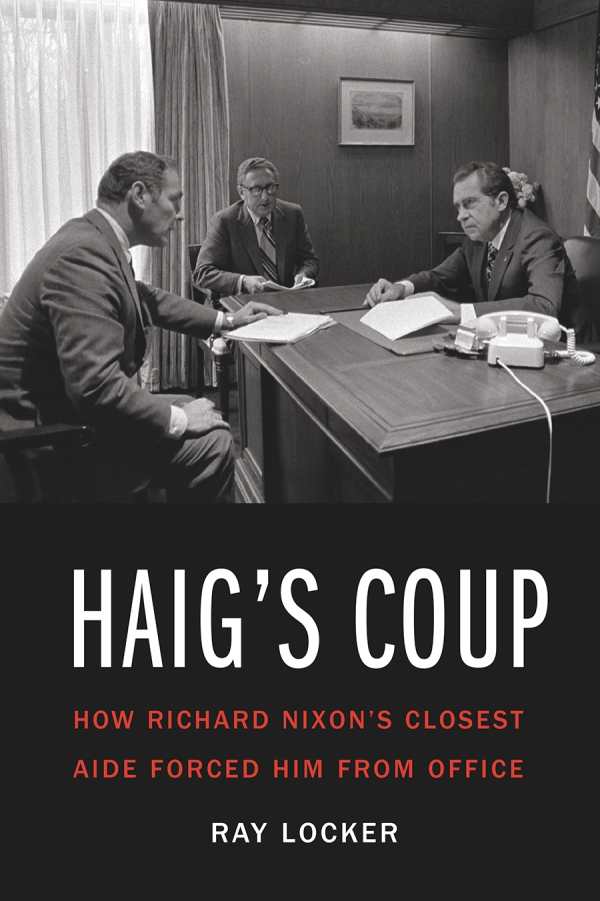Haig's Coup
How Richard Nixon's Closest Aide Forced Him from Office
Two-time Pulitzer Prize nominee Ray Locker’s second book about the Nixon White House is Haig’s Coup, an inside view of the besieged president’s final sixteen months in office as seen by his closest adviser, General Alexander Haig.
Haig, who served in Korea and Vietnam and was appointed as Henry Kissinger’s national security advisor during Nixon’s first term, returned to the White House as Nixon’s chief of staff in May of 1973. This was during the Watergate crisis and after the resignations of Nixon aides H. R. Haldeman and John Ehrlichman.
Locker’s account exposes a duplicitous, manipulative Haig whose allegiances are split between Nixon, hardliner military leaders, and his own ambition and reputation. Previously involved in illegal wiretapping and a spy ring that secreted documents from the White House to the joint chiefs, Haig engaged in acts of obstruction and evidence tampering. While orchestrating Nixon’s resignation, Haig shifted blame and dodged exposure to preserve his own legacy.
Locker draws from transcripts of tapes from the Nixon White House. He also consulted documents from various collections, some obtained through Freedom of Information Act requests, in addition to memoirs and other published sources. The book moves almost daily through Haig’s tenure in the White House, through to Nixon’s resignation and Gerald Ford’s pardon. With the skill of an investigator, Locker dissects the “dirty tricks” and tricksters of these tumultuous times. His book sheds light on the notorious Plumbers’ break-ins, a ranting, insecure Henry Kissinger, and Haig’s secretive liaison with Washington Post reporter Bob Woodward. Especially revealing are details about the man Haig and Kissinger called their “drunken friend,” the frazzled and unstable Richard Nixon.
Haig’s Coup bears witness to Vice President Spiro Agnew’s comment that Alexander Haig was the “de facto president” of the Watergate era. It will have a special place on the shelves of those interested in American politics and history. While the book does not stray from its focus on the Nixon administration, parallels to present day national leadership are unavoidable.
Reviewed by
Joe Taylor
Disclosure: This article is not an endorsement, but a review. The publisher of this book provided free copies of the book to have their book reviewed by a professional reviewer. No fee was paid by the publisher for this review. Foreword Reviews only recommends books that we love. Foreword Magazine, Inc. is disclosing this in accordance with the Federal Trade Commission’s 16 CFR, Part 255.

